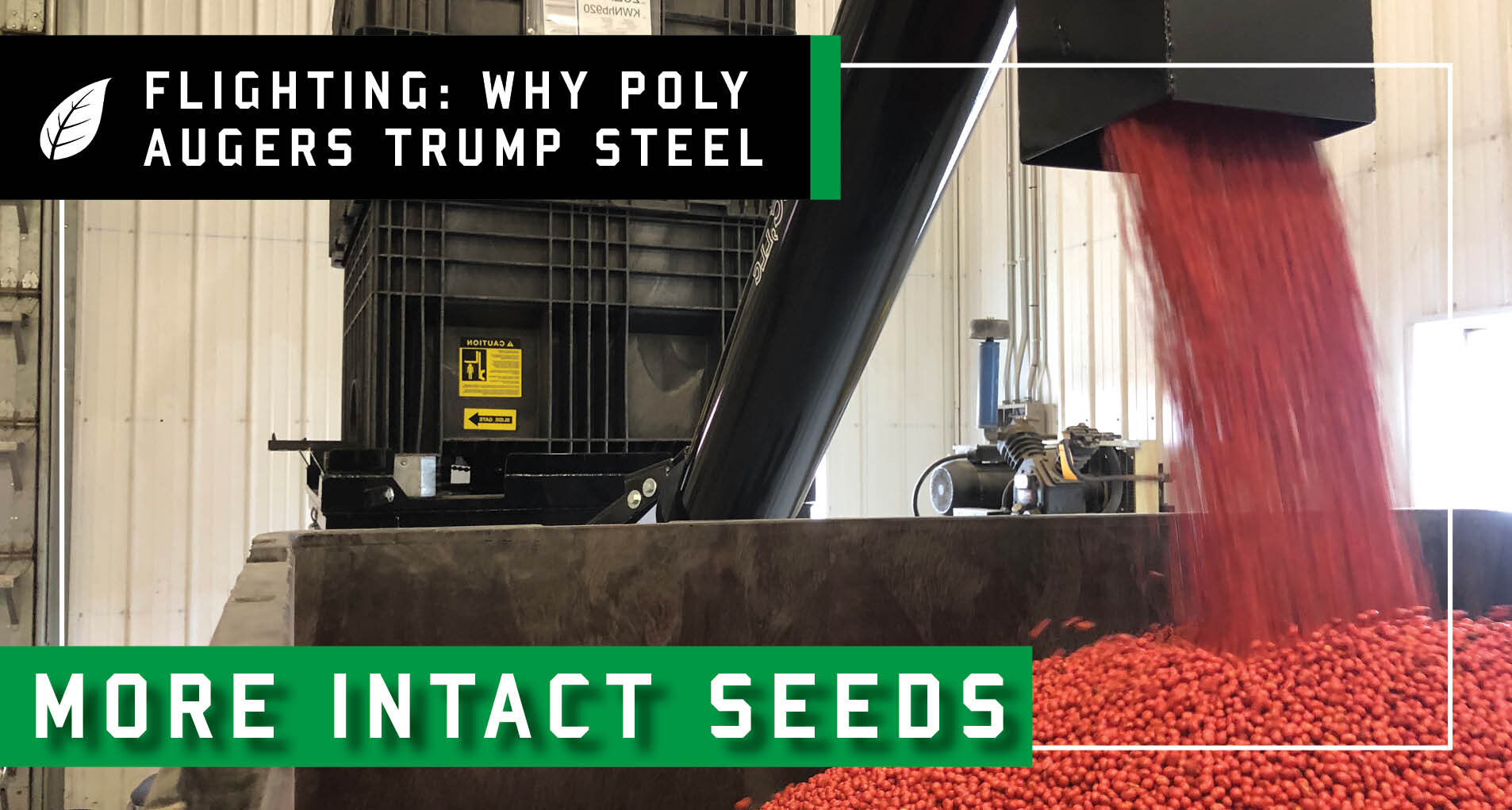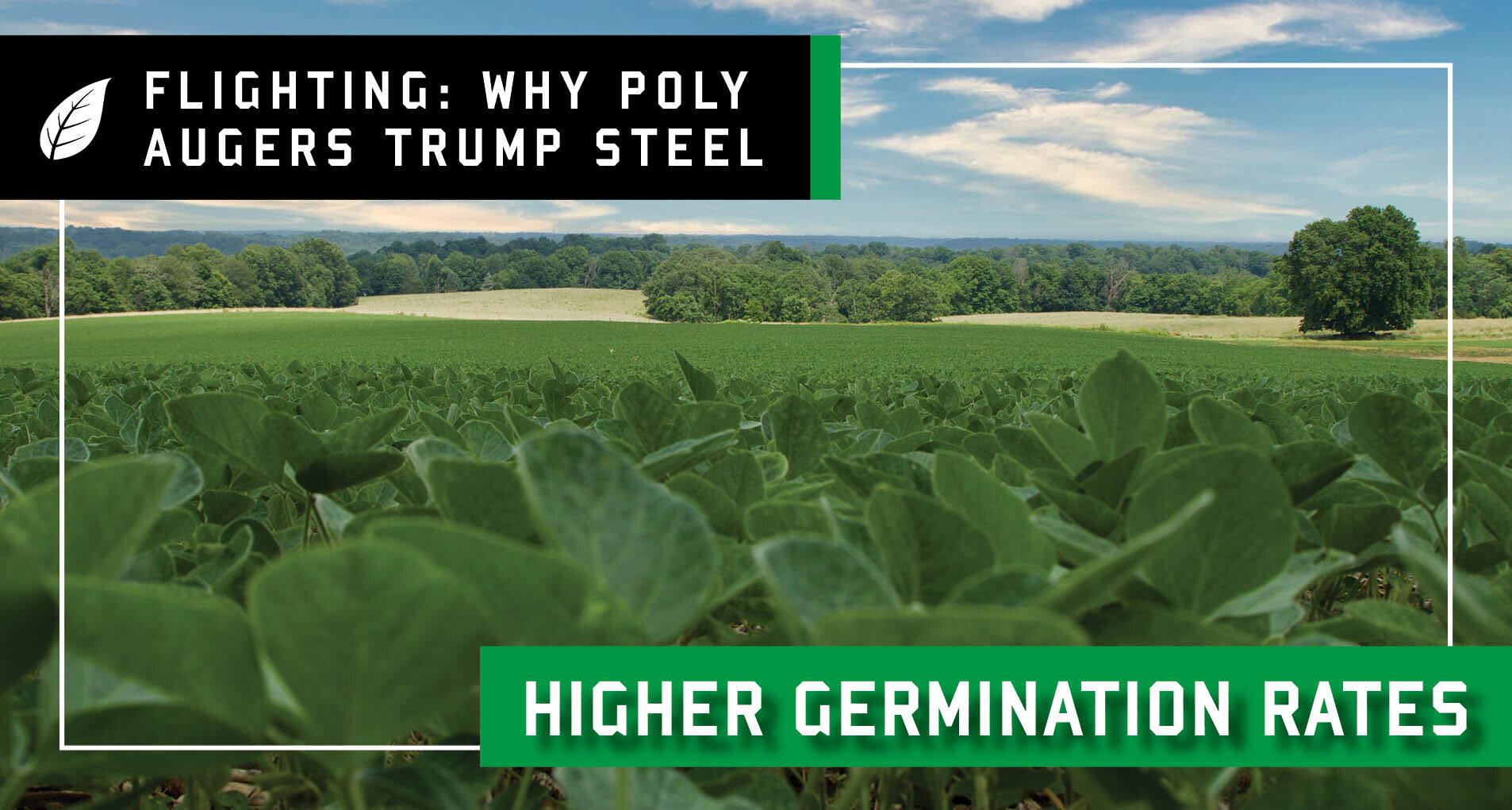Flighting: Why Poly Augers Trump Steel and Conveyors
If you’re in the market for a seed treater, it’s important to understand the various options available so you can make proper comparisons to the benefits of each.
For example, some treaters use atomizers to apply chemical to the seed, and others use spray nozzles. (Atomizers are better—see why here.)
Another varying feature? The flighting material. Some use metal, some have brushes, some use belt conveyors and others—like the AT500—use high-tech poly-cupped flighting. The innovative design of the polyethylene plastic gently handles seed. And unlike steel and belt conveyors, nothing sticks to it. The results?
MORE INTACT SEEDS
According to university testing,* poly-cupped augers deliver noticeably more intact seed to the field compared to both bristle and steel augers. With polyethylene plastic, 99.62% of seeds stay intact. Steel does 5x more damage.**
*Source: Impact of Bulk Seed Handling on Soybean Germination Rate | Authors: Dr. Matt Barr, Mr. Ben Rethmel, Mr. Randall Reeder | Test conducted at Ohio State University
**Source: Lundell Plastics
HIGHER GERMINATION RATES
Also with a poly-cupped auger, germination rates only decrease by 1.5%. That’s nearly over 5x as much as steel.
*Source: Impact of Bulk Seed Handling on Soybean Germination Rate | Authors: Dr. Matt Barr, Mr. Ben Rethmel, Mr. Randall Reeder | Test conducted at Ohio State University
**Source: Lundell Plastics
LESS CLEANUP
Unlike steel, the properties of the polythene plastic minimize adhesion. With just a hose, cleanup’s a breeze.
MAXIMUM YIELD POTENTIAL
More intact seeds mean higher germination rates, which means maximum yield potential.
The benefits of poly are clear. And if you’re a seed dealer or grower with 1000+ acres, the AT500 and its poly-cupped auger are right up your alley.





